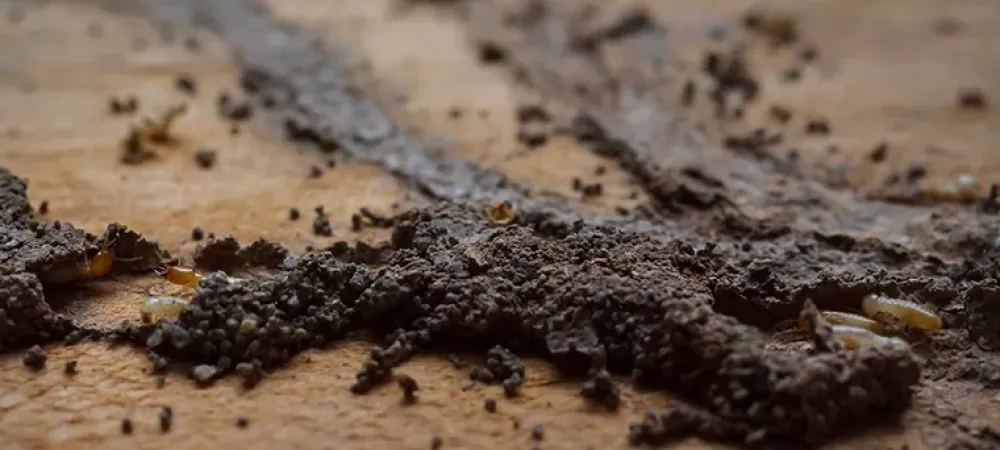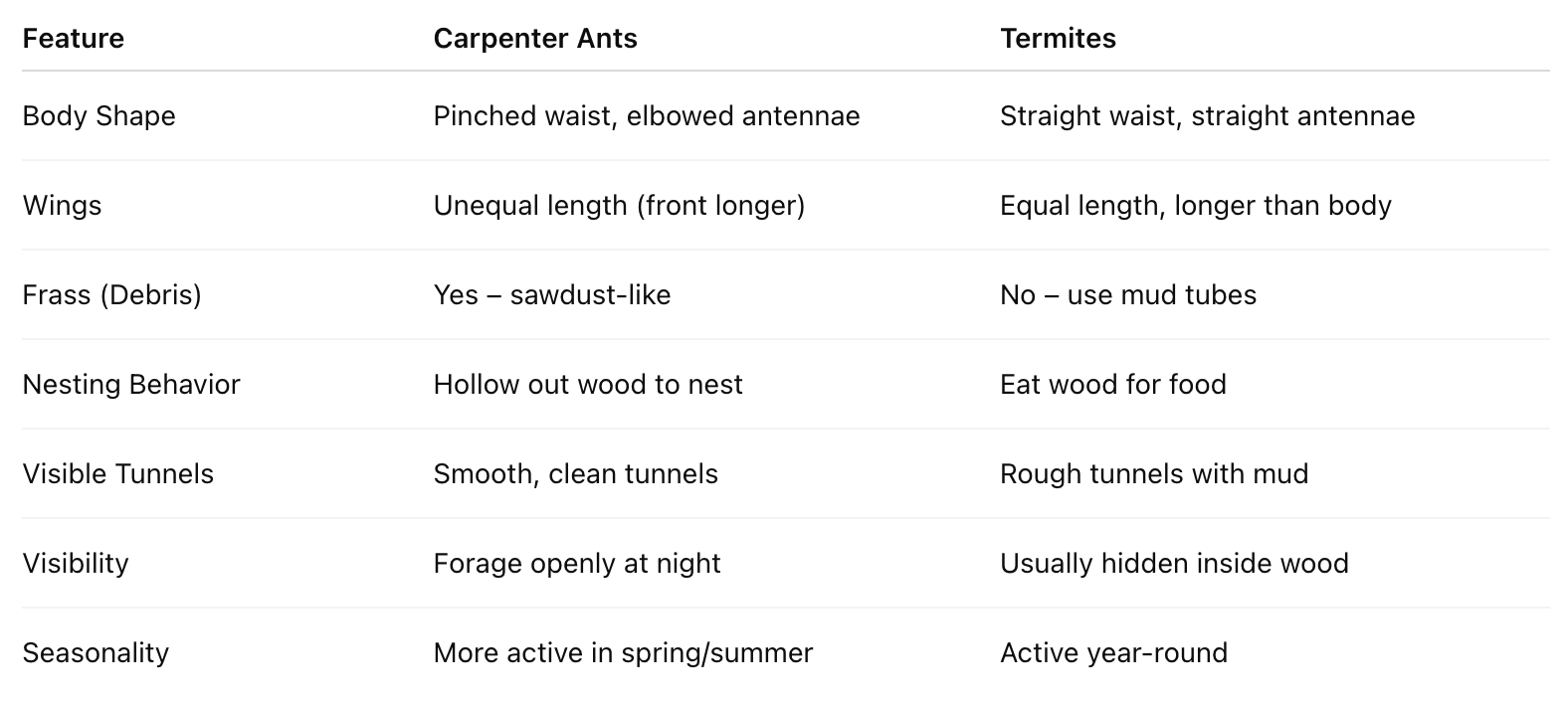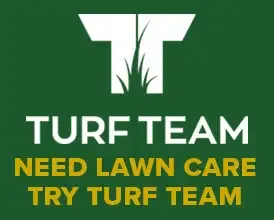Carpenter Ants vs. Termites: Identification Guide

Are those wood-destroying insects in your home carpenter ants or termites? Knowing the difference could save you thousands of dollars in home repairs. This guide will help you identify, compare, and take action against these two common structural pests—carpenter ants and termites.
Quick Answer
Carpenter ants and termites may look similar, but they’re very different pests. Carpenter ants chew through wood to build nests, while termites consume wood as food. Key differences include their body shape, wing size, and behavior (see table below). Correct identification is crucial for effective pest control.
Table of Contents
- What Are Carpenter Ants and Termites?
- How to Identify Carpenter Ants vs. Termites
- Side-by-Side Comparison Chart
- Prevention Tips
- When to Call Pest Control Professionals
- FAQ
What Are Carpenter Ants and Termites?
Both carpenter ants and termites are serious threats to wood structures, but they damage wood in different ways. Termites feed on cellulose—the main component of wood—causing widespread structural decay. In contrast, carpenter ants don't eat wood; instead, they hollow it out to create nests.
Understanding their behavior and biology is essential for effective pest management. Misidentifying one for the other could result in ineffective treatments, ongoing infestations, and increased home repair costs.
How to Identify Carpenter Ants vs. Termites
- Look at the Body Shape
Carpenter ants have a narrow, pinched waist and elbowed antennae. Termites have a thicker, straight-sided body with straight antennae. - Examine the Wings
Both insects have four wings. Termites have wings of equal size that extend past their body. Carpenter ants’ front wings are longer than the rear ones. - Check for Frass (Wood Debris)
Carpenter ants leave behind sawdust-like frass near their nest sites. Termites do not produce frass; instead, they leave behind mud tubes and small holes in wood. - Observe Activity Time
Termites are often found hidden inside walls and wood and are active year-round. Carpenter ants are more likely to be seen foraging at night, especially during warmer months. - Investigate the Damage
Termite damage often has a layered, honeycomb appearance with mud. Carpenter ants create smooth, clean galleries inside wood.
Carpenter Ants vs. Termites: Comparison Chart

Prevention Tips
Preventing carpenter ant and termite infestations starts with making your home less inviting to these destructive pests. Both insects are drawn to moisture, wood-to-soil contact, and easy access points in and around your property. By addressing these vulnerabilities early, you can protect your home’s structure and avoid the costly damage these pests can cause. Below are practical prevention tips every homeowner should follow to reduce the risk of infestation.
- Seal cracks and gaps around your home’s foundation and windows.
- Keep firewood and mulch away from your home’s foundation.
- Eliminate standing water and fix leaks to reduce moisture.
- Trim branches and shrubs away from the home.
- Store food in airtight containers to avoid attracting ants.
- Schedule annual pest inspections with a licensed professional.
When to Call Professionals
If you see winged insects indoors, hear faint tapping sounds in your walls, or notice unexplained wood damage, it’s time to call a pest control expert. DIY termite control rarely works long-term. A licensed pest control technician can perform a proper inspection, confirm the infestation type, and apply the right treatment.
For homeowners in the Caolinas, Bug-N-A-Rug Exterminators offers fast, affordable pest and termite control with no contracts.
Frequently Asked Questions (FAQ)
Q. What is the main difference between termites and carpenter ants?
A. Termites eat wood, while carpenter ants excavate wood to build nests.
Q. Are carpenter ants as destructive as termites?
A. While they don’t eat wood, carpenter ants can still cause significant structural damage over time.
Q. Can I treat termites myself?
A. DIY termite treatments are generally ineffective. Professional termite control is highly recommended.
Q. What do termite droppings look like?
A. Termite droppings, or frass, resemble small, dry pellets and are often found near infested wood.
Q. How can I tell if I have termites or ants in my walls?
A. Inspect for wing shape, frass, and tunneling damage—or better yet, get a professional pest inspection.
Q. Are termites active in winter?
A. Yes, termites remain active year-round, especially in warm climates like South Texas.
Q. How fast can termites destroy a house?
A. A large termite colony can cause significant damage in as little as six months.
Need expert help? Contact Bug-N-A-Rug Exterminators today for reliable carpenter ant and termite control in the Carolinas.

